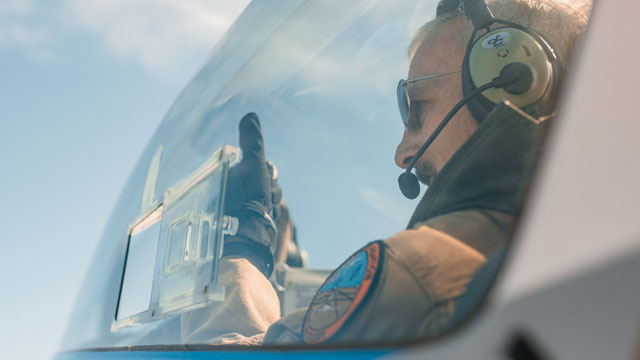Explore why Upset Prevention and Recovery Training (UPRT) is essential for pilots at all experience levels, and find out what experienced pilots say about their training.

As an experienced pilot, you might be wondering if Upset Prevention and Recovery Training (UPRT) is necessary for you. After all, you’ve logged countless flight hours, handled various in-flight situations, and honed your skills over the years. So, do you really need UPRT? What about the pilots you fly with? What responsibility do you have to them as a leader in your flight department or organization? In this article, we’ll delve into these questions, shedding light on the value of UPRT for pilots at all experience levels.
Who Is With You in the Cockpit?
As a pilot, you want both your skills and those who share the cockpit with you to be sharp. To start us off in this discussion, listen to this story by industry-revered safety expert Jeff Wofford on a real-life event he experienced as a corporate pilot. As the supervising pilot, he was not flying at the time of the incident; however, as the leader of the flight department he had ensured that his team as a whole would be prepared for an unexpected in-flight situation:
The Value of UPRT for Experienced Pilots
While your experience as a pilot is invaluable, integrated UPRT (Both on-aircraft and simulator) offers unique benefits beyond your typical simulator training that enhance your skills and safety, regardless of your flight hours. Here’s why:
Handling Extreme Upsets: No matter how experienced you are, handling upset conditions such as extreme abnormal attitudes (Nose High and Nose Low Overbanked) or flight envelope excursions (Stalls, Wake Turbulence, etc.) in an actual aircraft and not just a simulator is challenging. Integrated UPRT provides specialized human factors training in these areas, equipping you with the skills to handle unexpected upset conditions effectively and safely.
In this video, listen to experienced pilot Michael Berry discuss why he feels UPRT is integral to his flight department, because it provides the real-world experience necessary to avoid disorientation and other factors that could lead to Loss of Control In-flight:
Decision-Making Under Pressure: Integrated UPRT places a strong emphasis on decision-making under pressure. This is one of the main reasons an all-attitude capable aircraft should be used in training along with the simulator. It puts you in high-stress situations in a controlled environment under the guidance of a highly qualified on-aircraft UPRT instructor, allowing you to practice and improve your decision-making skills. This human factors training is a crucial aspect of handling real-world upset scenarios, which often require quick, accurate decisions under pressure often not replicable in a simulator.
In this video, listen to a Challenger 350 captain discuss how, even with his 20 years of flying experience, UPRT has made him a better pilot with the ability to prevent or recover from an airplane upset even under stress:
Prevention and Recovery: While a good UPRT program should prepare you to recover from most any upset, UPRT also focuses on upset prevention. It helps you better understand how various factors can lead to an upset and how to recognize the early signs of an upset. Again, this is another value of the on-aircraft component of UPRT because this platform allows you to experience various parts of the envelope that are not valid in a simulator due to its limited fidelity. This understanding allows you to take proactive steps to prevent an upset from occurring, thereby enhancing flight safety.
In this video, corporate flight department safety officer Lennie Moon discusses how UPRT gives you the tools to overcome an unexpected in-flight upset:
Case Studies: Experienced Pilots Who Benefited from UPRT
The benefits of Integrated UPRT for experienced pilots are not just theoretical; they have been proven in real-life situations. There have been numerous instances where experienced pilots, faced with real-world upset scenarios, have been able to recover their aircraft safely thanks to their UPRT training.
For example, consider the case of Qantas Flight 72, which experienced a sudden in-flight upset due to a malfunctioning Air Data Inertial Reference Unit. The pilots, despite being experienced, found their UPRT training invaluable in regaining control of the aircraft and performing an emergency landing, saving the lives of all 315 people on board.This is just one of many examples that highlight the real-world impact of UPRT.
Conclusion
UPRT (Integrated On-Aircraft and Simulator) is a vital part of your training as a pilot, regardless of your experience level. It equips you with resilience, increased skills, and knowledge to better prevent and recover upset events effectively and safely, enhancing flight safety and ultimately, saving lives.
In addition, you will likely find yourself supervising junior pilots, and in an unexpected scenario, the time it takes to react and take control might put you at risk. This not only makes it even more critical to ensure your own capabilities are up to speed, but also that you prioritize training for those under your leadership.
For final comments, listen to an experienced Fortune 100 corporate flight department training captain discussing how he and the pilots in his flight department considered UPRT the best training they had ever had:




Comments: